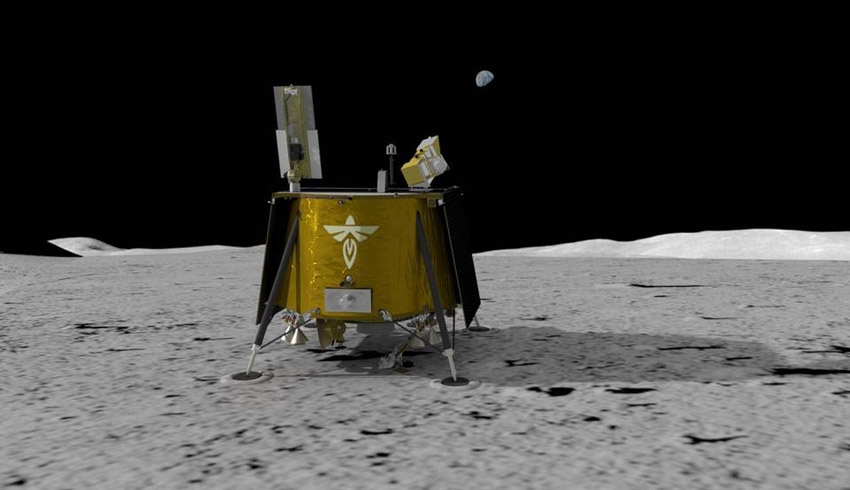NASA has awarded Firefly Aerospace a US$93.3 million ($121.5 million) contract to deliver a suite of 10 science investigations and technology demonstrations to the moon in 2023.
Specifically, Firefly Aerospace will be tasked with providing end-to-end delivery services, including payload integration, launch from Earth, landing on the moon, and mission operations. This is the sixth award for lunar surface delivery under the CLPS initiative.
The delivery, planned for Mare Crisium – a low-lying basin on the moon’s near side – is expected to involve an investigation of a variety of lunar surface conditions and resources, designed to help pave the way for human missions to the lunar surface.
The payloads, collectively expected to total 207 pounds (94 kg) in mass, include:
- The Regolith Adherence Characterization (RAC), which will determine how lunar regolith sticks to a range of materials exposed to the moon's environment during landing and lander operations;
- The Next Generation Lunar Retroreflectors (NGLR), which will serve as a target for lasers on Earth to precisely measure the distance between Earth and the moon;
- The Lunar Environment Heliospheric X-ray Imager (LEXI), which will capture images of the interaction of Earth’s magnetosphere with the flow of charged particles from the sun;
- The Reconfigurable, Radiation Tolerant Computer System (RadPC), which aims to demonstrate a radiation-tolerant computing technology;
- The Lunar Magnetotelluric Sounder (LMS), which is designed to characterise the structure and composition of the moon’s mantle by studying electric and magnetic fields;
- The Lunar Instrumentation for Subsurface Thermal Exploration with Rapidity (LISTER), which is designed to measure heat flow from the interior of the moon;
- The Lunar PlanetVac (LPV), which is designed to acquire lunar regolith from the surface and transfer it to other instruments that would analyse the material or put it in a container that another spacecraft could return to Earth;
- Stereo CAmeras for Lunar Plume Surface Studies (SCALPSS 1.1), which will capture video and still images of the area under the lander from when the engine plume first disturbs the lunar surface through engine shutdown;
- The Electrodynamic Dust Shield (EDS), which will generate a non-uniform electric field using varying high voltage on multiple electrodes; and
- The Lunar GNSS Receiver Experiment (LuGRE), which is based on GPS. LuGRE will continue to extend the reach of GPS signals and, if successful, be the first to discern GPS signals at lunar distances
The contract forms part of NASA’s Commercial Lunar Payload Services (CLPS) initiative, which aims to secure the service of commercial partners to land science and technology payloads on the lunar surface.
“We’re excited another CLPS provider has won its first task order award. With this initiative, we seek to develop ways for new science and technology development utilizing a service-based model,” Thomas Zurbuchen, associate administrator for science at NASA Headquarters, said.
“This allows US vendors to not only demonstrate their ability to safely deliver payloads to our celestial neighbour, but also expand this capability for others who want to take advantage of this cutting-edge approach to explore the moon.”
Firefly Aerospace is expected to provide the lunar delivery service using its Blue Ghost lander, with its Cedar Park facility to house the integration of NASA and any non-NASA payloads, while also will serve as the company’s mission operations centre for the 2023 delivery.
“The payloads we’re sending as part of this delivery service span across multiple areas, from investigating the lunar soil and testing a sample capture technology, to giving us information about the moon’s thermal properties and magnetic field,” Chris Culbert, manager of the CLPS initiative at NASA’s Johnson Space Center, said.

Charbel Kadib
News Editor – Defence and Cyber, Momentum Media
Prior to joining the defence and aerospace team in 2020, Charbel was news editor of The Adviser and Mortgage Business, where he covered developments in the banking and financial services sector for three years. Charbel has a keen interest in geopolitics and international relations, graduating from the University of Notre Dame with a double major in politics and journalism. Charbel has also completed internships with The Australian Department of Communications and the Arts and public relations agency Fifty Acres.

